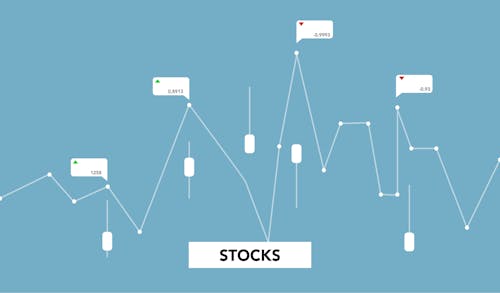Roulette Markets And The Dovish Dealer At The Fed’s Table

Image Source: Pexels
The market is once again at its favorite table — the roulette wheel of geopolitics and central banking — spinning between red headlines and black swans. Every tick feels like another chip tossed toward fate. Traders sit in the half-light of uncertainty, one eye on China’s trade salvos, the other on Powell’s poker face, trying to guess which way the dealer’s hand will move next.
The session opened in chaos. Beijing fired another round in the shipping wars, sanctioning the U.S. subsidiaries of a Korean shipbuilder. It was a shot across the bow, part warning, part reminder that the world’s supply chains are still subject to political tides. U.S. futures wobbled; equities opened lower. But right as the S&P kissed its 50-day moving average — that invisible tripwire for every algorithm on the Street — the tape turned. There was no divine revelation, no data print, no new peace treaty. Just that collective trader instinct — the sense that the selling had run its course and it was time to lean into the spin again.
Momentum built fast. The market began whispering to itself that a year-end ramp was still on the table. The logic was simple enough: if earnings season can dodge the worst of margin compression and if the U.S.–China drama cools even slightly by November, then there’s room for one more melt-up before the calendar runs out. In trading terms, the crowd simply refused to leave the casino while the lights were still on.
But what really loaded the dice was Powell. His NABE speech landed like a velvet hammer — all dovish cadence, no sharp edges. He spoke of “labor-market fragility” and hinted that quantitative tightening might soon end, effectively confirming what the bond pits already knew: the Fed’s next move is down, not up. Two rate cuts are fully priced for year-end, and the curve steepened just enough to remind everyone that liquidity is still the drug of choice.
That was all gold needed to break higher. It doesn’t shout, it simply absorbs the sound of money being debased and reflects it back in price. Gold surged to fresh records before catching its breath. Silver, the unruly sibling, overran the party and tripped at $53.5 — pure exuberance meets thin liquidity.
Small-caps joined the dance, lifted by lower yields and Powell’s tone of calm reassurance. For a few fleeting hours, screens turned green and traders dared to imagine the fragile calm might hold. And then, right on cue, the political theater re-opened for its late-day matinee.
The White House accused China of “economically hostile acts” for avoiding soybean purchases and floated the idea of retaliating with a “cooking-oil embargo.” It was absurd, unpredictable, and entirely on brand. Futures immediately buckled, gains vanished, and only the Dow and small-caps escaped with scraps of green. In the roulette of modern markets, even a tweet can flip the wheel from euphoria to despair.
AI names provided the comic relief. The day started ugly, but the usual “AI + chip + retail” headline rotation worked its magic. ARM jumped on whispers of new chip collaborations; Walmart (WMT) rallied on plans to integrate instant ChatGPT checkout — proof that artificial intelligence remains the market’s favorite placebo. But strip away the Magnificent Seven and what’s left — the “S&P 493” — is flat. It’s a reminder that beyond the AI carnival, the broader market is just waiting for direction.
Bank earnings flashed strength but without conviction. The big names beat estimates as usual, though the trading desks still carried scars from the recent volatility storm. Wells Fargo (WFC) stole a brief spotlight; BlackRock (BLK) quietly crossed $13 trillion in assets, a number so large it no longer stirs emotion — it just underscores who owns the market float.
Treasuries were bid across the curve, 10-year yields dipping below 4% before settling. Credit spreads tightened as if the last week’s panic had been a collective hallucination. Oil tested $57, the lowest since May, and the dollar slipped back into its range. Even crypto followed the script: Bitcoin stumbled early but recovered to $113k; Ethereum outperformed slightly, as if to remind traders that rotation lives even in the metaverse.
By the close, equities had staged a dizzying round trip — from fear to euphoria and back again. The market finished the day exactly where it began: emotionally exhausted but still at the table. “Neutral,” as traders say, but neutral is just the pause between one panic and the next.
There’s a rhythm to this kind of tape — sell the scare, buy the despair, fade the tweet, and repeat. Every headline becomes a spin of the wheel, every rally another chance to double down before the lights go out. The chips may move, but the game never really changes.
Because in this market, neutrality isn’t peace — it’s the sound of the dealer spinning again.
More By This Author:
The TACO Trade Reheated — Markets Bite Back As Trump Keeps The Menu Open
TACO Tuesday Comes Early: Markets Bite Back As Trump Softens On China
Tariff Man Reloaded: The Post-Close Shock That Froze The Weekend



